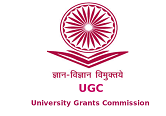In Vitro Evaluation Of The Effect Of Different Cleansing Agents On The Shear Bond Of Contaminated Zirconia Ceramics To Resin Cement
DOI:
https://doi.org/10.55995/j-cpi.2024001Keywords:
Zirconia, Shear Bond Strength, Zirclean, Scanning Electron MicroscopyAbstract
Aim: The aim of this in-vitro study was to evaluate the effect of different cleansing solutions on the shear bond strength of contaminated zirconia ceramic to resin cement.
Materials and Methods: Fifty zirconia disc (Dental Direkt,YES Germany) of size 10mm x 3mm were fabricated and mounted in self-cure acrylic resin block using a customized jig. The samples (n=10) were grouped based on two cleansing solutions and sub grouped based on two contaminants. Group I (control), neither contaminated nor any cleansing solution used. Group IIA, contaminating with saliva, cleansed with water and Group IIB, contaminating with GC Fitchecker II, cleansed with water. Group IIIA, contaminating with saliva, cleansed with Zirclean and Group IIIB, contaminating with GC Fitchecker II, cleansed with Zirclean. Subsequently fifty composite buttons (5.5mm x 3mm) were fabricated and bonded to the test samples using resin modified glass ionomer cement (Riva Cem,SDI). Thermocycling, shear bond strength, scanning electron microscopy were carried out for all the groups. Statistical analysis was done using independent t test with SPSS software
Results: On comparison it was found that samples contaminated with saliva, cleansed with Zirclean showed a higher mean shear bond strength and the result was statistically significant (P<0.001). Samples contaminated with GC Fitchecker, cleansed with Zirclean showed a higher mean shear bond strength and the result was statistically significant (P<0.001). The result collaborated with SEM analysis of the debonded samples.
Conclusion: Zirclean can be used as an effective surface cleansing solution for zirconia restorations.
Downloads
Published
How to Cite
Issue
Section
License
The entire contents of the Journal of Clinical Prosthodontics and Implantology are protected under Indian and international copyrights. The Journal, however, grants to all users a free, irrevocable, worldwide, perpetual right of access to, and a license to copy, use, distribute, perform and display the work publicly and to make and distribute derivative works in any digital medium for any reasonable non-commercial purpose, subject to proper attribution of authorship and ownership of the rights.





